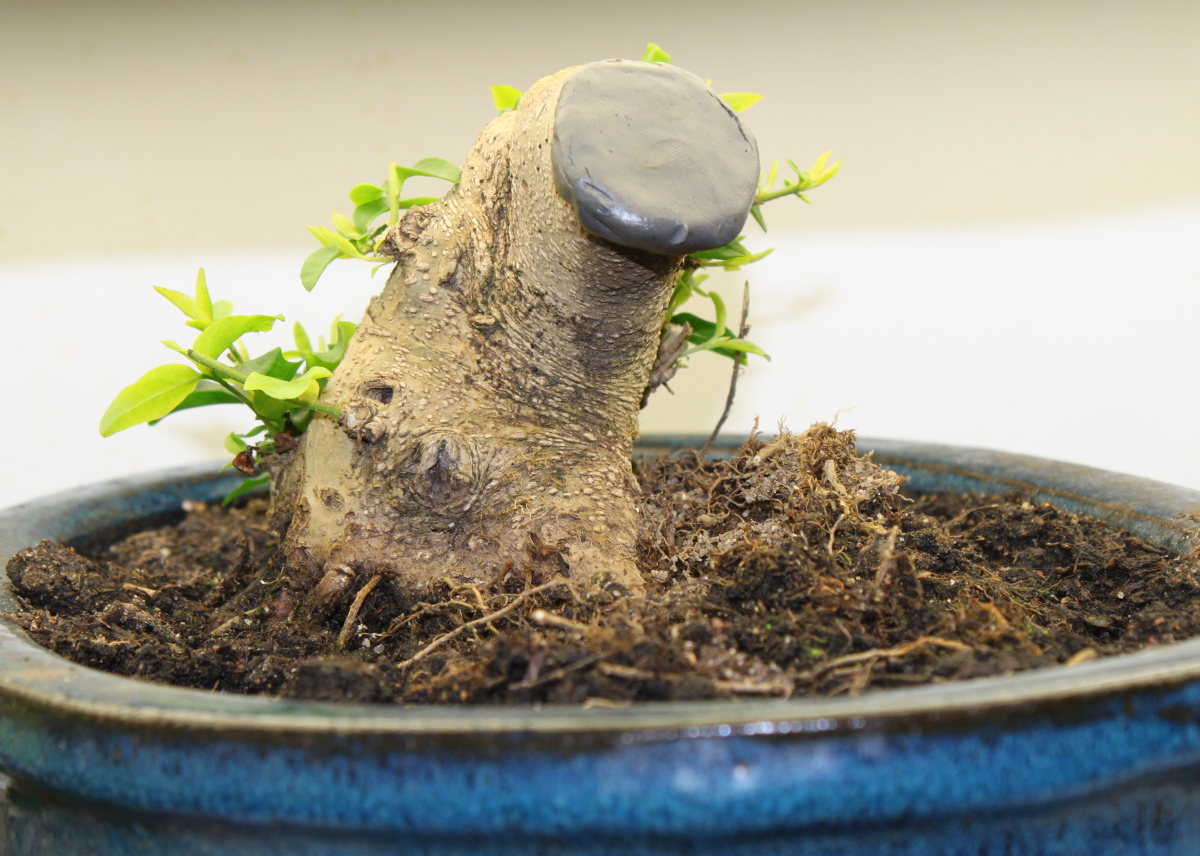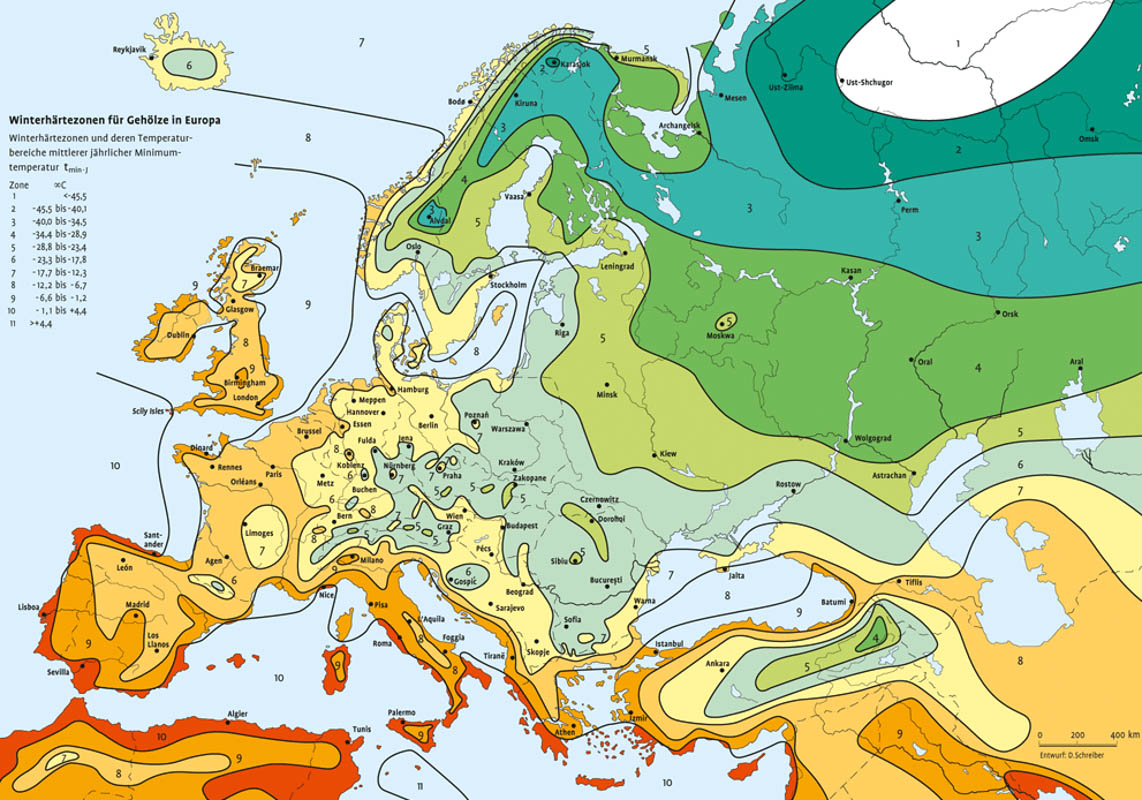This is for Tom, really. First of all, there is a good amount of information available, some of it even quite usefull.
Evergreengarderworks , for example. Those would be the best advice one could get, IF we lived in zone 8. Southernmost Finland is borderline zone 6, zone 5 being very close. Search Internet, anything that is written of overwintering bonsai in zone 5 and colder is of interest.
I like that map, because it puts me to zone 6. There are other maps that are not so nice :-). Maps made in other parts of the world are not too accurate in Scandinavia.
For the purpose of discussion, I would first divide trees into 4 categories. Naturally I have not invented these classifications, I just modified general knowledge.
- Tropicals
- Tender temperate
- Somewhat hardy trees
- Domestic trees (and other fully hardy trees)
First and last groups are easiest. Tropicals you can keep inside all year round (given you can provide adequate light and humidity). Domestic trees require only minimal protection, because they are potted (and not growing in the ground).
Following remarks are generalisations. Species is one thing, origin is another.
1. Tropicals
The main difference between Finland and lets say Central Europe (or most parts of the US) is the length of winter. Generel advice tells to take the trees outside when temperatures allow. In my experience this is mostly futile.
Ficus for example can take temperatures below 10°C, but they wont much grow. Growth takes place mostly at nigth time. One should take Ficus indoors when night time temperatures fall below 15°C. We may get temperatures like this in May, but usually not before half of the June is gone. Night time temperatures can get (constantly) below 15 again in August. In southern Finland the time one can keep tropicals happy outside is about 6-10 weeks. Sure they can survive a longer period, but will not get any better. Whats the use of keeping bonsai in conditions where there will be no development?
If you have the time, you could take trees inside for the night and back out at full sun when temperatures allow. This will give you several more weeks of nice sunshine every year. Still, you will have to grow tropicals indoors for 3/4 of the year.
One will have to find out a way to grow trees indoors so that they not only survive the winter, but get better too as a bonsai. This is not an easy task, and many Finnish bonsai hobbyists have found it too time, space and money consuming to be worth it. They concentrate on outdoor trees.
2. Tender temperate
These are most common trees we see in shops. Species include Chinese elm (borderline hardy temperate) and Ligustrum sinensis. These are possibly the most difficult to grow in Finland. They want a dormant period, or at least can take some cold, but they really dont want anything that we would call a winter. They can take occasional slight freeze, but not much more than that.
How do you keep trees in this category alive? I have found a couple of ways.
First, some trees can be grown as tropicals. Carmona for example, I keep them inside all year round.
Second way is keeping trees outside until night time temperatures are about 5°C. Best way would be to wait until we get first frost, and take trees inside the night before :-). Lacking forecasting powers I take these trees inside when I estimate our Autumn has been cool enough for them. Species include Ligustrum sinensis. Last summer was so cold my Ligustrum did not much grow. After it got back inside, it was like it had Spring. Our summer was a winter for it.
I tried to grow Chinese elm like this, but not with success. Trees deteriorated and died after 3-5 years. I think it is safest to consider it belonging to the next group, group 3.
Trees in this group can be taken outside after danger of last frost is over, perhaps April - May. That means they will have to be grown indoors half of the year. Same thing as with tropicals, it is not enough to keep them alive, they must develope too. I have got this far with a chinese elm grown as category 2 tree (just to add a picture):

3. Somewhat hardy trees
These include most species commonly grown as bonsai. Japanese maples, Juniperus chinensis, Japanese and Chinese elm, white and black pine etc. This is the second most difficult group. One can not suppose these plants can take our winter, year after year, and they can certainly not be grown indoors.
Cold frame is my answer, well insulated box with a translucent insulating cover. When it gets really cold, I use additional styrofoan covers. Coldest temperature last winter was -21°C, and it did not get below -7°C in the cold frame. All zone 7/8 trees should be ok. One has to open the cover when temperatures are over freezing point, or molds and fungus will attack the trees.
More south, usual way to overwinter trees in this category is in the garage or other unheated space. I know of only one person who does this in Finland, not surprisingly coming from UK. Period for protection is long, 5 to 6 months, and it will be difficult to keep trees between -9 and +4°C (Brent Walston's article above) for so long. From February on daytime temperatures may be quite high, and trees will probably think its Spring already. This is the most dangerous time, because night-time temperatures will be well below zero. It is usually said, its not the cold, its the freeze-thaw cycle that brakes the roots and kills the trees. New soft growth is also very tender. This period could last for 2-3 months.
In garage one has to take good care, that there are no rodents.
Moisture is often considered to be the worst enemy of the trees in cold frame. For this reason I do not let it snow inside the box. Melting snow will make things very wet in Spring.
4. Domestic trees
This is by far the easiest and most rewarding group, when it comes to overwintering. There are at least two ways to provide the minimal shelter these trees require.
First way: My tables second as a wintering boxes. There is a steel net all over, to keep rodents out. Box does not need to be insulated or completely closed - actually its better if its ventilated.
I put trees inside the boxes after temperatures are constantly below freezing. It is common to get -20
°C BEFORE we get a snow cover, and even domestic trees will suffer when in pots. If there is a long very cold period, I cover my trees with broken cardboard boxes (inside the box). If so, I left the cardboard on for the rest of the winter. I have not lost any domestic trees due to winter for a long time.
Second way is to cover trees with lots of snow. Snow protects trees very well. In the spring this will thaw and freeze, but trees under the snow and ice are relatively well protected. It is a common practice to mulch trees, cover the pots and trees to the first branch with bark chips or similar. Mulching protects trees when there is no snow.



























